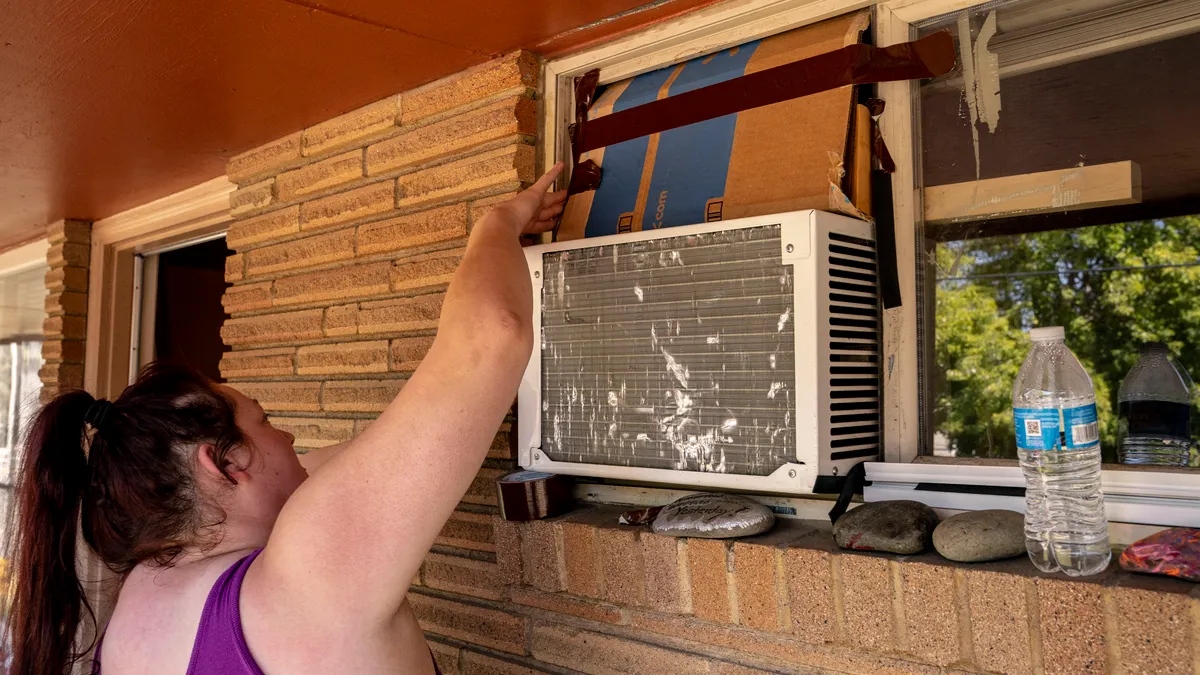Dive Brief:
- Keeping homes cool in the summer is getting more expensive for people across the U.S. as climate change drives temperatures up, finds a June 3 report from the National Energy Assistance Directors Association and Center for Energy Poverty and Climate.
- The average U.S. electric bill over the June-through-September period is projected to be $719, a nearly 8% increase year over year and the highest average in 10 years, the report says.
- The authors urged states to discount low-income families’ utility bills and bar utilities from shutting off electricity. They also called on the federal government to provide more funding for energy bill assistance, energy efficiency retrofits and heat pump installations.
Dive Insight:
“Temperatures keep going up every year,” NEADA Executive Director Mark Wolfe said at a press briefing. “If you look at longer-term projections, this is not going to change.” That means the projected $719 average 2024 summer electric bill is likely just a base for summer electric bills in the future, he said.
To develop the projections, the report authors looked at federal data on temperatures, electric usage and electric prices. The report defines summer as June through September. “September is getting hotter,” Wolfe said. “Hot enough so that I think we need to think of September also as a cooling month.”
Cooling costs creep up
Some regions are projected to face a greater rise in average year-over-year summer electricity costs than others. The greatest bill increases are projected to be in the Mid-Atlantic, which includes New York, Pennsylvania and New Jersey, and the Pacific region, which includes Washington, Oregon and California.
Regions face different year-over-year changes
The rising cost of cooling raises serious public health and equity concerns since extreme heat is the No. 1 weather-related killer in the U.S. The lower a household’s income, the less likely it is to have cooling equipment, the report says, although a majority of homes have some form of air conditioning. Even if a low-income household has cooling equipment, using it may pose a financial hardship. The report says that more than a third of households reduced or skipped paying basic expenses, like medicine or food, to pay at least one month’s energy bill in the last year.
“States have provided low-income families with air conditioning equipment at no charge in previous years,” he said. “What they find is that families won't turn it on because they're afraid of the bill.”
At the same time, fewer federal dollars are available to help people pay their energy bills. Congress cut funding for the Low Income Home Energy Assistance Program from $6.1 billion in fiscal year 2023 to $4.1 billion in fiscal year 2024, the report says. The trickle-down effect of that cut in federal funding is that states are reducing the benefits they offer and the number of households they support, it adds. With states typically using 80% of the program funds to help people pay their heating bills in the winter, only 20% is left over for home cooling this summer, the report says.
Seventeen states and D.C. provide some rules to protect people from utility shutoffs in the summer, but “many of those are very, very limited to specific dates,” Wolfe said. “These are rules that really go back 30 years, sometimes 40 years, before we had continuous heat waves,” he said. “We've always had short-term heat waves, for a day or two days, and families could cope with that.” Last summer, however, some communities faced heat wave after heat wave just days apart, he said.
“What we're recommending is that — until we get through this, and we have time to come up with a better system to help families over the summer — utilities agree to not shut families off during the summer,” Wolfe said. “What we're missing in the country is a year-round strategy to help people pay their heating and cooling bills, and we think that Congress should take that up next year.”











